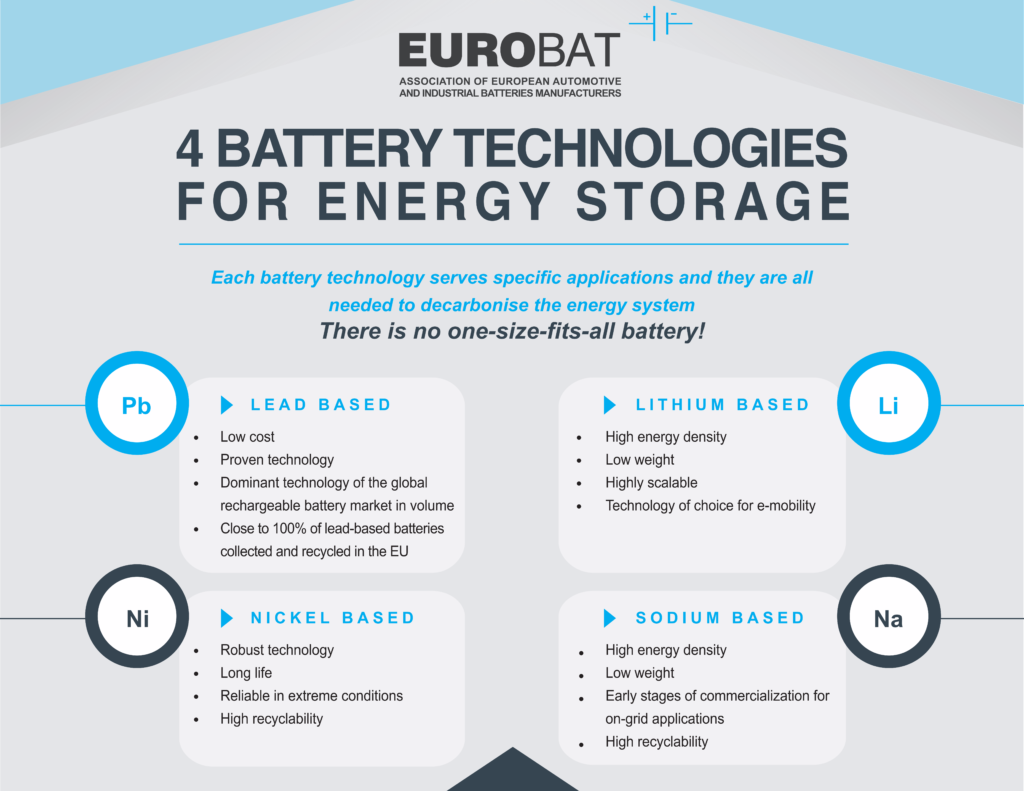Battery Energy Storage in the EU report

In order to deploy renewables and to release their potential for ensuring a stable and secure energy supply, Europe needs to work to overcome the intrinsic limits of renewables. One solution to these challenges is Battery Energy Storage. Technology advancements, social needs and market demand are rapidly making batteries an attractive solution for decarbonising the European energy mix.
Batteries can be installed at every level of the grid, from generation and transmission to distribution, households, commercial and industrial customers, and can store energy from on-peak renewable energy and release it when it is more needed in central, de-centralised and off-grid situations. Batteries offer grid support services like voltage control and frequency regulation, enabling grid stability and flexibility.
Batteries can also play an important role in off-grid and micro-grids solutions. They can replace diesel generators to power telecom towers, micro-grids in small islands and even buildings and households isolated from the grid.
All battery technologies (lead, lithium, nickel and sodium) have an important role to play in this regard: there is no one-size-fits-all battery, since different applications require different battery technologies. It is, therefore, necessary to identify the most appropriate type of battery for a particular application in terms of cost, performance and environmental impact.
With this report, EUROBAT aims to contribute to the EU policy debate on climate and energy and explain the potential of Battery Energy Storage to enable the transition to a sustainable and secure energy system based on renewable sources, with reduced greenhouse gas emissions and enhanced energy independence for Europe.